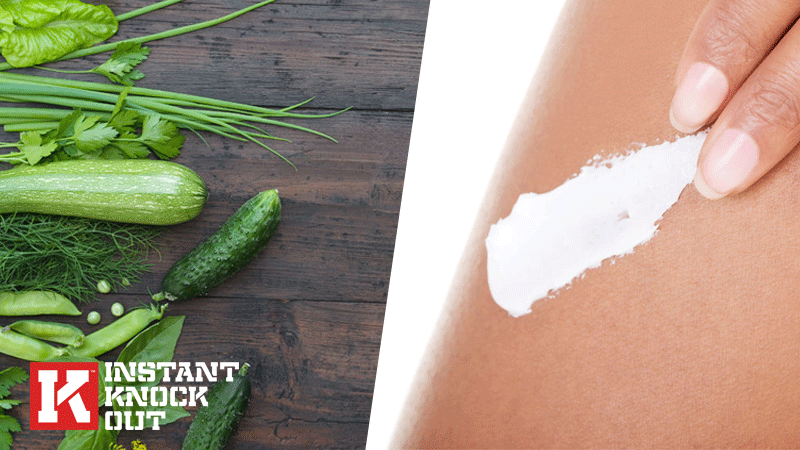How Does Fat Loss Cream Work?

Have you ever heard of fat loss cream?
It’s is a trendy new product aimed at helping you lose weight and tone up problem areas.
But as we know, the fitness and nutrition industry can full of false promises there are number of products that promise miracles, but rarely deliver.
They are built on hope, rather than science and results.
Could fat loss cream just be the latest in a long line of products that claim to help you shed fat but leave you disappointed?
In this article we take a look at fat loss cream.
Is it key to your weight loss problems, or is just another fad with little benefit?
We take a look at the evidence.
What is Fat Loss Cream?
Fat loss cream is a topical ointment that is said to target fat cells around your belly, hips and thighs.
As a cosmetic product, these creams and gel have become increasingly popular over the last few years, mostly because of celebrity endorsements rather than actual scientific research.
They can be expensive and retail for as much as $60 for only a short supply.
These topical treatments promise to fight fat and visibly reduce skin imperfections, decrease cellulite and boost lipolysis – the breakdown of fat cells. As such, they are designed for use specifically around your tummy, butt and waist – the so called stubborn areas.
Some suggest that fat loss creams can help de-bloat, reduce how much your excess fat ‘wobbles’ and encourage weight loss in a clinically proven way.
Some go one step further, claiming to help you help you shed inches from your problem areas in a matter of days.
How does fat loss cream work?
The idea is quite simple – fat loss cream is claimed to have a transdermal effect by entering the bloodstream via the skin.
Once in the bloodstream, it is claimed that the bioactive ingredients reduce fat cell size by temporarily dehydrating them. This then signals your body to use the fat as fuel.
Secondary to this, lipolysis creams are also said to increase blood flow through a mechanism called vasodilation, which simply means that your blood vessels dilate more.
This would then allow a greater delivery of oxygen, nutrients and fat burning.
For the cream to work effectively, you are told to massage it into your body so it penetrates the skin. You have to do this twice a day too which can be time consuming and inconvenient.
What Ingredients Do You Find in Fat Loss Creams?
Although the chemical content of these products differs by manufacturer, you’ll find these ingredients in some of them.
- Glycyrrhetinic acid – a bioactive component of licorice.
- Aminophylline – a drug used to treat asthma. It has a similar effect to clenbutarol.
- Forskolin – a compound found in the Indian Coleus plant
- Caffeine or kola nut – used topically to prevent excess fat accumulation.
- Bitter orange – some contain this nutrient, which is similar to the banned fat burner, ephedra.
Do these ingredients help burn fat?
The science behind these nutrient compounds is mixed.
Manufacturers suggest that when they permeate the skin through heat and massage, they begin to take effect.They suggest that this is better than oral administration as the compounds aren’t altered by gut bacteria and remain more potent.
That’s never been proved.
There is a small amount of evidence that glycyrrhetinic acid can reduce unwanted fat levels when applied topically [1]. However, the data on this is currently limited and uses very high doses not found in commercial products.
Not many products use this ingredient anyway.
Similar results have been found when using aminophylline [2].
This drug is well known for causing severe adverse reactions and is currently banned for use in cosmetic products in places such as Canada.
There have been numerous reports of allergic reactions to one of its components called ethylenediamine.
Some nutrients, such as caffeine, are said to create a thermogenic fat loss effect when massaged into the skin.
Caffeine is a potent fat burning nutrient, however, most research has looked at beverages such as green tea.
Do Fat Loss Creams Work?
There’s a remarkable lack of research when it comes to fat loss creams.
Although a limited number of ingredients have been shown to have some benefits, these products (which often use low doses of each nutrient) have not been fully safety tested.
Relying on a product like this can really set you up to fail. It doesn’t help you control your appetite, nor does it help you fix the issues of weight gain at the root cause.
To achieve long-term results you need to look for something sustainable that can fit into your lifestyle with ease.
Fat loss creams should be classed as drugs
According to the US Food and Drug Administration (FDA). fat loss creams should be classified as a drug.
While manufacturers claim that the product is a cosmetic, they do contain actual drug-like compounds. Cosmetics don’t need to be part of the same rigorous federal safety testing that pharmaceutical drugs do.
This is just another case of dishonest manufacturers trying to find loopholes in the system to exploit benefits to the company.
Fat Loss Cream Side Effects
When it comes to dropping body fat, losing weight and improving the way you look it’s all about your lifestyle.
Following a controlled diet, exercising on a regular basis and focusing on fat burning nutrients all help to optimize your body composition.
When you choose pharmaceutical products such as ointments and gels you run the risk of side effects or adverse reactions – and fat loss cream is no different.
Here are some of the more common side effects:
- Fast or irregular heart rate
- Nausea, sickness, dizziness and tremors
- Loss of appetite
- Stomach discomfort and diarrhea
- Excessive sweating
As we’ve already mentioned, it is completely possible to develop allergic reaction to some of the bioactive properties in these creams too.
Summary
Fat loss creams are designed to be massaged into your skin as a way to deliver specific drugs and nutrients to your fat cells.
Although they are understudied, some small clinical trials have shown promise – however, the nutrients that might work aren’t often included in these products in the doses needed to have any effect.
You’ll find that even if your fat loss cream did work, the results would be temporary – and expensive.
We suggest that following a healthy diet and exercise plan, and using a fat burner supplement is a better way forward. That way you can target fat loss at the root cause.



